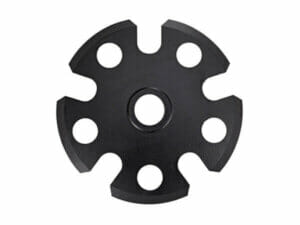Not only do they make the ascent easier, but they will also help you on the descent. Let’s face it: they’re our absolute best friends on long treks – Yes, I’m talking about trekking poles. What else? I mean, they’re an absolute must for long-distance walking in particular. Finding the right poles, however, is a tall task to say the least. There are quite a few differences among folding and telescoping poles, not only in terms of their construction and material. There are so many different handles and options when it comes to adjusting the poles and, of course, countless little extras such as spring-loaded sections and wide baskets.
In the following, we will explain all you need to know about when you need which pair of trekking poles and what their fundamental differences are.
Material
The material used for many trekking poles is aluminium. This metal is light, durable and resilient, making it ideal for use whilst walking and trekking in varying terrain. It comes in various thicknesses, so the poles can be trimmed down to a minimal weight. If you want an even lighter trekking pole, then there are some made of carbon as well. This carbon fibre composite material is substantially lighter and has the advantage that it is significantly stiffer. Because of this stiffness, the poles do not vibrate, which is something that can be extremely irritating about aluminium poles, unless they are spring-loaded. The disadvantage of carbon is that it may suddenly break if they get a dent or crack, unlike an aluminium pole, which can bend.
Some models such as the Leki Sherpa FX.One Carbon poles use both materials. The bottom is made of carbon, whilst the top is aluminium.
Folding or telescoping poles?
Still, most trekking poles are so-called telescoping poles, which can be shrunk down for storage. Locking the individual parts in place can be achieved by either using a twist lock mechanism or levers, depending on the poles. The latter has the advantage of being easy to use even with gloves and easy to replace in case they become defective. On the other hand, they are a bit heavier, but in lighter poles the twist lock mechanism is more useful.
If the weight plays a particularly important role, so-called folding poles are very popular. The individual sections are connected with a thick cable and secured with a push button. Because there are no levers or twist lock mechanisms, the trekking poles are even lighter. Models such as the Distance Carbon by Black Diamond are particularly popular among trail runners and hillwalkers.
But keep in mind that the pole holders on hiking and trekking rucksacks are designed only for telescoping poles. The upside is that folding poles usually fit perfectly in one of the side pockets.
Grips
Handles are extremely important because if your hands are hurt, you’ll suffer for the rest of your trek. You should never, ever, ever use purely plastic grips. They are mainly used in very cheap poles and are only reliable when it comes to giving you blisters. Therefore, grips should at least be made of rubber or even better cork, or have a foam padding. Sweat is thus absorbed and friction is prevented.
Normally grips are ergonomically shaped and made to fit comfortably in your hand. In some models, such as the Leki Micro Flash Carbon Nordic walking poles, the gripping area is extended further down, which has the advantage that it allows you to find the optimal position of your hand in any terrain.
So-called shark grips are available on Nordic walking poles and intended for sports and may be even of interest to trail runners.
An extremely important component is wrist strap, which helps to keep the poles secure in your hand and plays a huge role when you push off whilst walking. The width of the wrist strap should be adjusted so that your hand is as close to the handle as possible.
Important extras for trekking poles
As with other types of equipment, there are numerous bits and bobs that significantly increase the comfort of trekking poles. The already-mentioned suspension on aluminium poles minimises the vibrations that occur upon impact and thus take the strain off of your forearms. This is a real plus, especially on long or multi-day tours.
For glacier trekking or winter walks, another aspect you should consider is the proper basket. Wider baskets provide better grip in the snow, which facilitates progress. Usually, you can swap out the baskets depending on the terrain, since wide baskets, for example, would be more of a hindrance in rocky terrain.
If you have to deal with longer asphalt paths on your trek, it may be useful to cover the tips of the trekking poles with rubber tips. These are simple attachments that protect the tips against wear.
By the way, if you are going to be travelling by plane, do not pack your poles in your hand luggage as it is strictly prohibited. Instead, wrap them up tightly and put them in your suitcase or trekking rucksack.
So, what trekking poles should you use?
That depends, as it so often does, on how and where you plan on using them. If you only need poles for leisurely walks that provide enough stability for the rare technical path, then go for some traditional no-frills aluminium telescoping poles. But if you go on occasional multi-day trips and tackle more difficult terrain, have a look at spring poles with removable basket and an elongated grip. A good example would be the KOMPERDELL Speed Trail Carbon trekking poles. If weight or lack thereof is one of your main concerns, then you should go for carbon folding poles. These can be so light that you can just hold on to them for the duration of your walk.
By the way, the length of the poles is correct when your arm is at about a 90 degree angle. When going downhill, you can increase the length of the poles by about five to ten centimetres, and shorten them about the same amount when walking uphill.
» Calculate your correct walking pole length
And, another thing: if you encounter some flat paths with solid ground, pack away the poles and walk without them for a while. Why? Well, there is a theory stating that excessive use of poles may negatively affect your sense of balance, as it is trained significantly less when you use poles.







